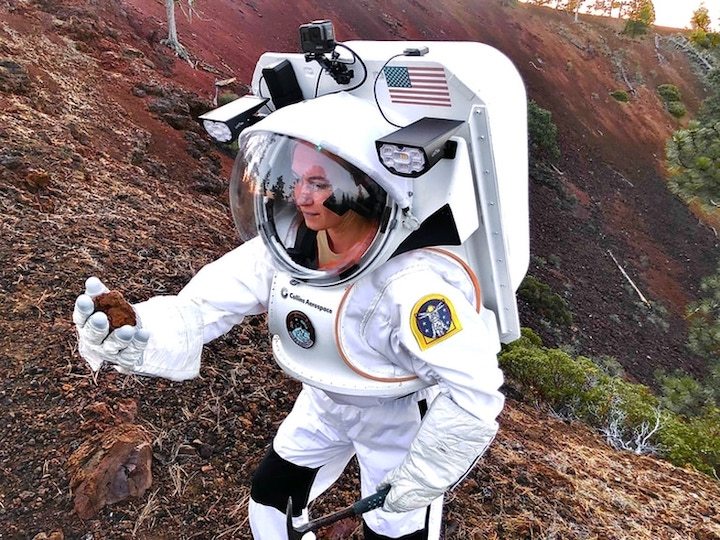Lee said his project normally does its testing at a meteorite impact crater on a remote island in the Arctic, until the pandemic derailed plans to go there this summer.
But testing in Oregon had its own set of derailing challenges.
“We got… a bit behind schedule with the wildfires. Running from spot to spot to find a breathable place,” Lee said.
In Oregon, researchers tested spacesuits at Lava Butte, Big Obsidian Lava Flow, Fort Rock, Hole in the Ground and the lava flow at the top of McKenzie Pass — just like the astronauts from the Apollo Mission did decades back. But this time, they also went to new locations like the Pumice Slope at Crater Lake National Park, the Painted Hills and Skylight Cave near Sisters.
Lee says the cave field tests by NASA and spacesuit maker Collins Aerospace were the first of their kind in history.
The fieldwork this time around was less about geology and more about testing new technology that’s being integrated into the spacesuits.
Lee says even now on the International Space Station, astronauts doing spacewalks will carry a literal spiral binder with hard copy instructions for different tasks attached to the arm of their spacesuit. It’s not fancy, but it works. And it gets around the potential complications and hazards of operating electronics in the pure-oxygen environment of a spacesuit.
“But when you think about going back to the surface of the moon where you’re going to be doing field geology, mining, driving robots, vehicles. You’re going to be carrying a spiral binder the thickness of a phone book if you did that,” Lee said. “Now the time has come basically for some well-matured IT to get integrated into the suit.”
The new systems display information – like maps, technical specs and vital signs – inside the helmet.
“So this takes time. You don’t test it for the first time in space,” he said. “You test it on Earth in places that are forgiving. Where you know, if it doesn’t work, that’s OK. Nobody dies.”

Spacesuit engineer Ashley Himmelmann in the Collins Aerospace spacesuit for analog studies examining and documenting a rock sample at Lava Butte via the spacesuit’s integrated Information Technologies and Informatics Subsystem.
NASA Haughton-Mars Project / Pascal Lee
Quelle: OPB






